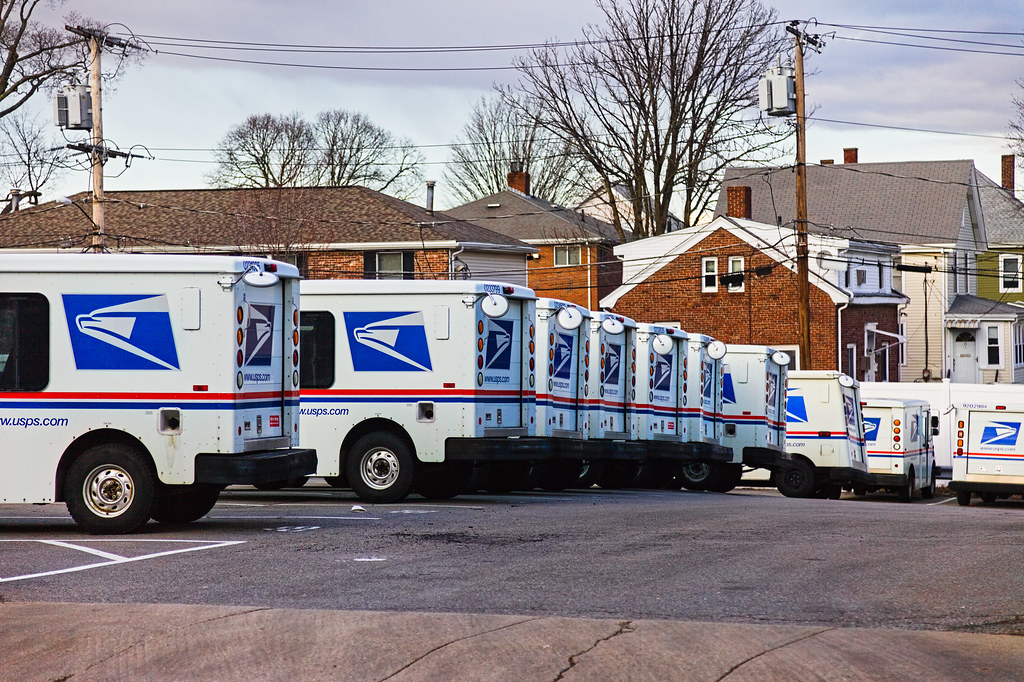Postmaster General Louis DeJoy needs to face reality that it will continue to lose money if it keeps spending money on things like electric vehicles.
Postmaster General (PMG) Louis DeJoy is fed up with critics of his plan to reform the U.S. Postal Service. In a recent op-ed for The Washington Post, he claimed that his proposal to stem losses at America’s mail carrier is working and called “on voices who continue to advocate the status quo to recognize that inaction has been proved to create a death spiral for the Postal Service.”
The PMG rightfully calls attention to recent successes such as reducing transportation costs by nearly $1 billion annually. However, DeJoy fails to recognize that perpetual price hikes (most recently on July 14), failed forays into non-core business lines (e.g., packages, money orders), and bloated vehicle purchases are a recipe for disaster. PMG DeJoy can turn his struggling agency around, but he must acknowledge the many problems facing the USPS.
In the first paragraph of his op-ed, Dejoy ditches reality to pursue a debunked narrative. He states, “We are a self-funding agency, generally receiving no tax dollars, and we must control our costs and cover them through the sale of our products and services.” Never mind that the USPS received $10 billion from Congress to offset pandemic-related losses.
Or, the $3 billion given to the USPS by Congress to purchase electric trucks. Or, the more than $3 billion per year in subsidies the agency rakes in through tax gimmicks and preferential loans. This gravy train is key to understanding the USPS’ fiscal foibles. In DeJoy’s telling, the USPS must turn things around with meager resources and soaring obligations beyond the agency’s control.
The reality is that the agency’s own choices have led to mounting net losses and soaring expenses.
In January, Jory Heckman of Federal News Network reported, the “USPS currently plans to purchase 66,000 electric vehicles [EVs] over the next five years, as part of a nearly $10 billion spending plan. In total, the agency expects to purchase 100,000 electric and gas-powered delivery vehicles through 2028.” That’s a lot of dough, and the losses will continue once these EVs take the streets.
According to a March 2022 inspector general report, EV adoption would not be good for postal finances under a wide range of cases. The report notes that an EV fleet would be more expensive than conventional trucks assuming, “an average delivery route length of 24 miles per day, and 301 operating days per year.” There are some scenarios where 20-year total ownership costs could be lower for EVs than gas-powered trucks, but only if it is assumed that “electric vehicles have lower fuel and maintenance costs per mile.”
However, according to an in-depth analysis by analytical firm We Predict, “in a three-month time frame, EV service costs were 2.3 times higher than a gasoline-powered car. At 12 months, EV service costs were still 1.6 times higher. We Predict found service-related costs averaged $306 per electric vehicle, while a gas-powered car averaged $189.” Despite these large and obvious drawbacks, DeJoy continues to call for wider EV adoption at the USPS.
The agency’s lack of business sense extends far beyond fleet procurement. A case in point is the USPS’ “Connect Local” service, which is supposed to efficiently handle small business deliveries but is instead hemorrhaging cash. According to the USPS, Connect Local mail “allows businesses to send documents locally [to recipients in the same delivery unit] same day or next day … target mailers include law firms, real estate firms, medical offices, and event organizers.”
The program was first rolled out in a market test in January 2022, and it was quickly apparent that the program would be costly for taxpayers. In its FY 2022 Annual Compliance Report (released in January 2023), the USPS deemed initial market test results “encouraging” despite costs exceeding revenues by more than tenfold.
Despite these red flags, the Connect Local program continued for another year. The USPS recently released its FY 2023 Annual Compliance Report, which contained the same disappointing results for the beleaguered “experimental” program. Costs were about 37% higher than revenues, while volume remained stubbornly low (at about 10,000 sales) despite the program being rolled out to all 50 states.
The USPS has tried papering over these losses by repeatedly raising the cost of first-class mail. On July 14, the agency hiked prices from 68 cents to 73 cents. The recent price hike is the second increase of 2024, and the fourth increase since January 2023. Since January 2023, the USPS has raised prices by 13 cents or more than 20%. According to a new report by the non-profit postal watchdog “Keep US Posted,” these repeated hikes are unlikely to get the agency back into the black.
The report finds, “[u]nder the current process, the USPS proposes new rate increases before the impact of prior increases can be fully realized. USPS demand models, which are used to justify rate increases, have never been tested in this way. USPS stands to lose considerably from miscalculating its customers’ sensitivity to price.” These off-the-mark revenue projections cost the USPS $1.8 billion annually, or about one-third of the agency’s $6.5 billion net loss for fiscal year 2023.
DeJoy needs to acknowledge these difficult truths if he is going to turn things around at the USPS. The agency’s flawed decisions are the culprit for continued losses. No amount of taxpayer dollars can fix that.
Ross Marchand is a non-resident fellow for the Taxpayers Protection Alliance.
Originally published by Issues & Insights. Republished with permission.
For more Budget & Tax News.
